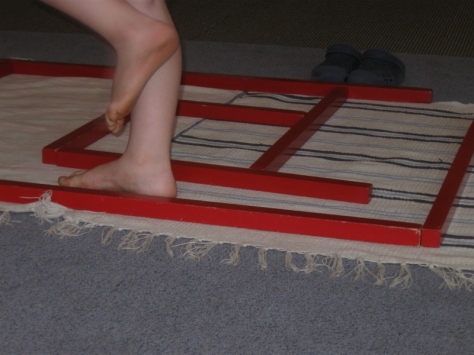Life really is left up to a lot of chance. I wasn’t particularly knowledgeable about Montessori at that point, but I’ve known a few people in my life who recommended it. My mom told me that she wished she could have sent me to a Montessori school growing up. Knowing that it was a great alternative to traditional education but not really knowing what was so great about it led me to apply for a position as an afternoon assistant. The school was located over an hour away across a huge city, but I was seeking something different in life. I had worked with children a lot in my life, mostly babysitting and various volunteer experience so I knew I could at least swing the child-care part. Luckily I nailed the interview and was hired to work at AMS.
Working in the after-care program I had not yet had the opportunity to experience the Montessori classroom. I could see all the works on the shelves, but had never seen them used. Trying to get money to gain my independence from my then-current home life I started picking up extra shifts whenever someone was out sick. I got to see the Montessori classroom in action during a morning period and I LOVED IT. In fact I can recall my first Montessori-Whoa was watching a 4 year old girl put together the Red Rod Maze. She got each piece one at a time and placed them meticulously on her mat. After placing them and admiring her work for a second she quietly walked across the room and grabbed the teacher’s bell. Arriving back at her mat she removed her shoes and walked slowly through the maze with the bell never ringing once. I saw no teacher interfering with her actions, or guiding her in anyway. In fact at that point I saw no teacher anywhere around, just children quietly conversing and working independently. I expressed to the Lead Teacher later what I had observed the girl doing, and she nodded and explained that the materials could be used many ways so long as they were respected.
Shortly after my arrival at the school was Parent Education Night. I was encouraged to come and learn more about Montessori and why we do what we do. The topic of the evening was Language. I had seen children working with the letters on the floor spelling words and sometimes sentences. I thought that was the extent of Montessori Language curriculum. Oh boy, how wrong was I? I remember being distinctly confused when to demonstrate writing ability the Lead Teacher grabbed a cylinder block from the Sensorial Shelf. She then showed how the three-finger grasp guides a child’s muscle memory to hold a pencil. I was completely blown-away. Children worked with that work every day, and clearly enjoyed doing it. They were gaining multiple levels of education and satisfying a natural curiosity to explore the objects around them. Here is when I was completely sold on Montessori Education.
Shortly after that Parent Education night I expressed my desire to know more to others at the school which led to enrolling in the American Montessori Society Training. I’m so thankful for supportive Lead Teachers and a supportive Director who encouraged my questions and allowed me to experience Montessori first-hand.
3F3NRMFBAW6A

